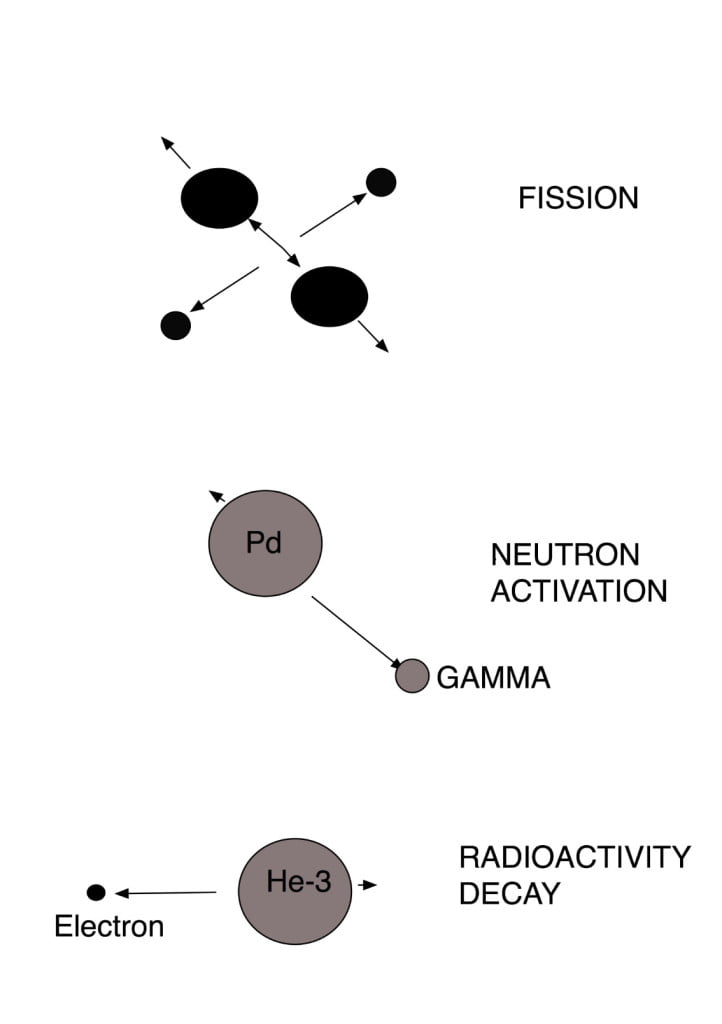Examples of how nature dissipates nuclear energy
I’m trying to encourage use of known behavior to evaluate the possibly explanations for LENR.
One of the goals of scientific theory is to improve application of the phenomenon being explained. A theory is not “useful” if does not actually describe how LENR works so that the theory can be used to improve the ability to produce LENR at commercial rates. When this definition is applied, the present theories are not useful.
A great deal is known about nuclear behavior in general and LENR in particular. This information is being ignored in preference to using imagined processes having very little relationship to what is known or is possible based on logic. We need to start by acknowledging and agreeing on some basic conclusions. We need to apply these conclusions consistently to every effort to explain LENR. We can fill in the details as we go along, but not at the start of the process.
The lesson provided provided here involved a universal characteristic of all nuclear reactions, with one apparent exception. Normally, when a nuclear reaction of any kind occurs, the energy is released as KINETIC energy contained in emitted particles, including photons.
When fusion takes place at any temperature under any condition, except LENR, the nuclear product fragments into two particles.
Release of nuclear energy [.ppt]

This conclusion leads to another.
Muon fusion shows that simply bringing two D close together, even at low temperature, results in the normal fragmentation of the product. This means that any imagined process that simply forces the D to get close enough to fusion can be expected to release energy by the normal fragmentation mechanism. Clearly any process that brings the two D close enough to fuse during LENR also must involve a process that releases the energy in a manner different from what nature normally uses because the hot fusion products are not detected during LENR.
In the case of LENR, the nuclear products do not fragment. This result is most clearly seen in the production of helium created in numerous studies and the transmutation products created by Iwamura et al. Tritium production is less clear in this regard but is nevertheless consistent with this conclusion.
Helium can result from two deuterons combining into a single nucleus. This reaction produces more energy/He than any other possible source of helium. The amount of energy/He measured during LENR is close to the amount resulting from D-D fusion and is significantly greater than the amount resulting from any other source of helium.
The process of helium production shows no evidence for the energy being released as the kinetic energy of particles or fragments resulting from the process. In other words, the helium results from a mechanism that is very different from the mechanism normally used by nature to dissipate nuclear energy.
If we agree on these facts, we can conclude that LENR requires a process that both lowers the Coulomb barrier and at the same time dissipates the resulting energy in a novel manner using an unusual mechanism. The only challenge is to find a mechanism that combines lowering of the barrier with energy dissipation in a consistent and logical way. In other words, we need to stop looking for individual mechanisms for these two processes that act independently of each other. We must look for a single unifying mechanism.
Let’s move on to examine some of the proposed processes, starting with the “breathers” idea.
Several people have proposed a spontaneous temperature change can occur in a material such that some local regions can get cold enough of a BEC to form or hot enough for normal fusion to occur. Although this concept violates the Second Law of Thermodynamics, the event is proposed to be brief and random, which are considered exceptions to the Second Law.
Let’s start by imagining the sequence of events. First a D atom gets suddenly very cold by losing energy to its surroundings. We will not be concerned how this happens just yet. For a BEC cluster to form, other D atoms have to move from their present locations some distance away from the cold spot to the cold spot while the spot remains cold. To move, a D must have kinetic energy. So, the process is imagined to result in energetic D accumulating together into a structure that does not have energy.
Where does the energy go that each added D brings to the growing BEC? Now an energy extracting mechanism must be proposed such that as energy is brought to the site by each D, a mechanism removes the energy to the warmer surroundings. This is no longer a random process and it must continue long enough for many D to diffuse from sites located at increasing distance from the growing BEC. To repeat, the D has to move by diffusion, which requires energy. Once it joins the BEC, it has to dump this energy into the surrounding atoms. This event has to occur hundreds of times as this BEC grows on its isolated site. In addition, millions of other isolated sites within the lattice have to grow similar a BEC. This process has to take place for weeks in order to continue producing energy at the observed rate and duration.
Consequently, we have to imagine conflict with three basic requirements: violation of the Second Law, the violation of Gibbs energy requirements, and creation of an energy extracting mechanism not know to exist. This idea seems to require a high level of conflict in order to justify a process that has no reason to exist other than to explain LENR. This level of conflict is too high to apply this idea to LENR.
